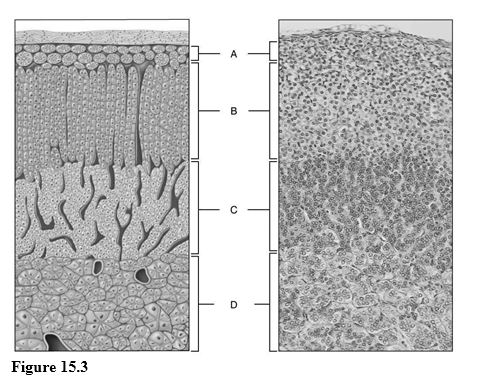The plasma membrane is mostly made of molecules that have hydrophilic heads and hydrophobic tails. These molecules are called ________
A) proteoglycans
B) phospholipids
C) glycolipids
D) lipoproteins
E) glycoproteins
B
You might also like to view...
Describe the strategies that some aquatic insects, such as mosquito larvae and dipteran larvae, use to breathe air. What is the limitation of these strategies?
What will be an ideal response?
How do blood solutes pass through the walls of continuous capillaries?
A. Through thoroughfare channels B. Through intercellular clefts C. Through filtration pores D. Through sinusoids E. Through fenestrations
Using Figure 15.3, match the following:

1) Produces glucocorticoids.
2) Produces epinephrine.
3) Produces aldosterone.
4) Excess hormone levels result in Cushing’s syndrome.
5) Hormones mimic sympathetic nervous system neurotransmitters.
6) Produces androgens.
The idea that not all training will be beneficial to all people within an organization encompasses the analysis of...
A. The task B. The person C. The organization D. The ability